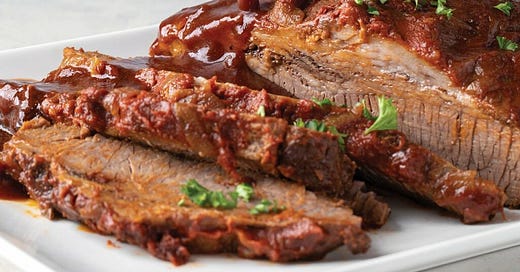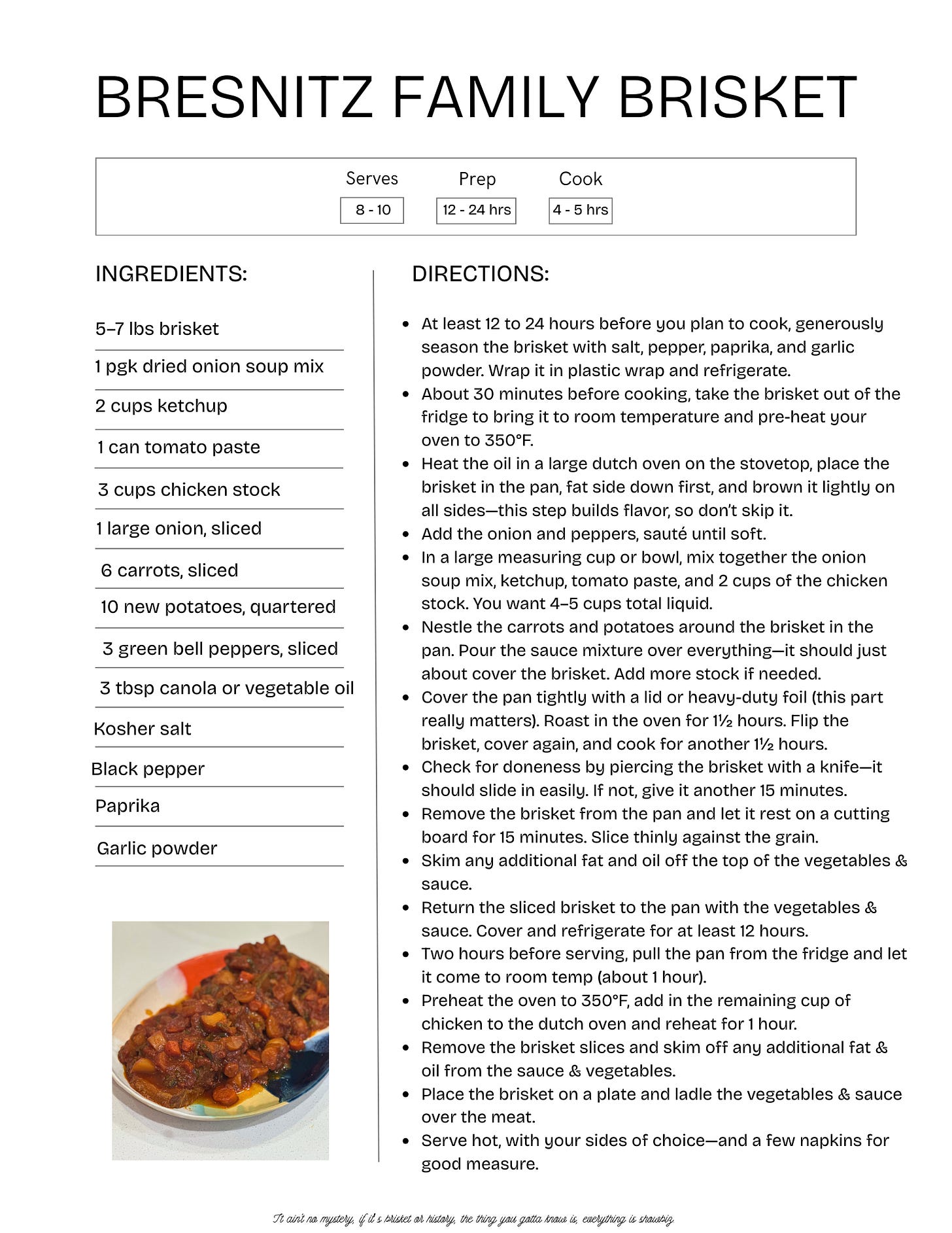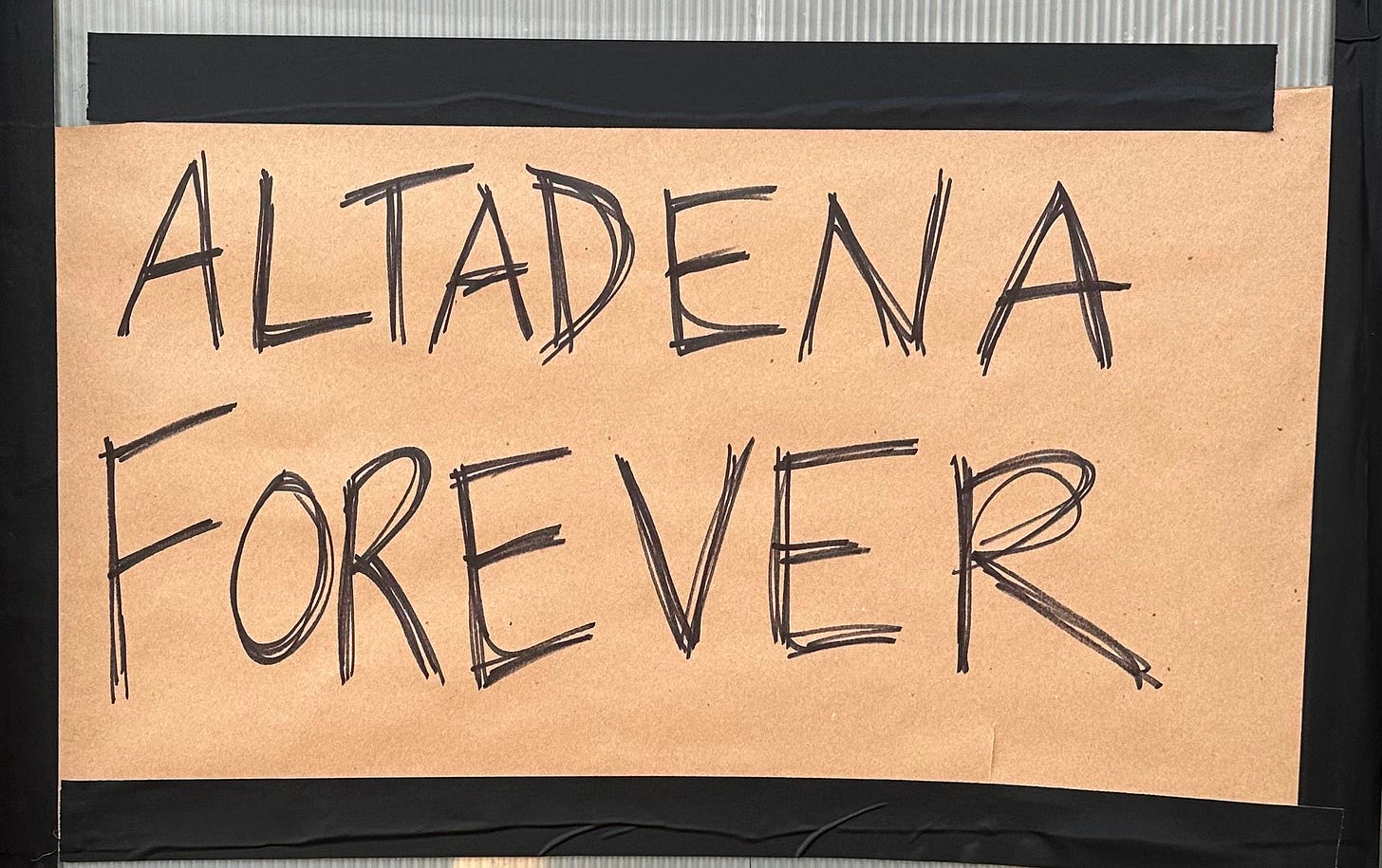If I’m being honest, I make brisket once a year. Springtime. For Passover. That’s it. It’s the kind of dish, however, that does not need to be in my regular rotation to hold its weight. When I think about the can’t miss meals in my recipe arsenal, it’s always top five. Brisket doesn’t just feed a crowd—it connects the dots between my past and present. These aren’t just flavors, they’re landmarks. It’s one of those dishes that reminds me that food can be a tradition, a time travel, and a flaunt—all at once. One bite and I’m back at my grandparents’ house—haggadahs in the living room, food piled high on the table and a seder conducted between hockey periods.
Like so many braised dishes, brisket can be intimidating. It’s a big cut of meat, it takes time, and if you rush it or start with the wrong ingredients, it’ll fight you the whole way. You can’t just toss it in the oven and come back a few hours a later. Sure, it’s forgiving, but only up to a point and if you trust the process, you will be rewarded. You’ve got to plan, prep, and pace yourself. Treat it right from the beginning, and it’ll take care of you in the end. So with that in mind, here are my Five Rules for Braising a Brisket.
Rule One: Halal The Way
Listen, the type of brisket you pick is a real truth-teller. Even with a long cook, lots of added flavor and the best intentions, you can’t fake a proper version with a vacuum-sealed hunk of beef from the back of the freezer section. I’ve tried it all—high-end butchers, grocery store specials, "organic" cuts—they all come short one way or another. There is, however, one version that has never let me down: Halal. Fresh, clean, flavorful, and most importantly—no mystery water weight that disappears in the oven to leave you with half the dinner. Your final brisket is only as good as the meat you start with, and once you find the perfect piece, it’ll become a part of your family tradition.
Rule Two: Bigger is Better
Brisket isn’t a one and done dish. It is built for groups, for leftovers, for standing over the stove eating slices with your fingers while you “test it.” So don’t get shy with the size—get the whole cut, not just the flat. A bigger piece of meat cooks better, stays juicier, and gives you that perfect mix of tender slices and burnt-edge ends. If you’re going to commit to a braise that takes hours (and a process that takes days), you might as well make enough to feed your family, freeze a few portions, and still have some left to sneak from the fridge the next day.
Rule Three: Use a Family Recipe (Even If It’s Not Yours)
This is a dish steeped in stories. If you’re Jewish, your grandma made it. You probably have an aunt who has a version that involves ketchup and peppers (see the recipe below). And if you are planning to make it for the first time, skip the trending TikTok videos and do some digging. If brisket’s not part of your heritage, ask your Jewish friends—they’ll definitely have thoughts. And if you are the Jewish friend about to embark on your initial braise, text your mom, your cousin, or that one kid from Hebrew school who always brought in the good leftovers. Every brisket tells a tale, and using a family recipe—whether it’s yours or borrowed—adds a layer you can taste.
Rule Four: A Time Honored Tradition
This is not a weeknight dinner situation. Brisket doesn’t care that you’re tired or that you “just want something quick.” Brisket needs time—like, real time. Season it a day in advance, minimum. Let the spices get comfortable, let them move into the meat. Braise it low and slow for a few hours, then slice it up to let it take an overnight nap in its own juices. The next day, reheat it like an old friendship, and boom—tender, rich, deeply satisfying. Time is the secret ingredient in all of these braising recipes and brisket will absolutely call you out in front of friends & family if you try to take a shortcut.
Rule Five: Let the Sides Bring the Crunch
Here’s the thing: brisket, and its bathing veggie cohorts, are by nature, soft. That’s the point. So don’t expect them to pull off both rich flavor and a crisp texture—they’re not here to have multiple roles. Instead, build contrast around them. I like a bright, acidic salad—think shaved fennel with citrus or lightly pickled cucumbers—or a whole head of roasted cauliflower. Or maybe some crispy roasted potatoes if you want to double up the tuberous tastiness. Brisket has main character energy—but without the right sides, it’s just a star with no storyline.
A few weeks ago, LA’s food scene did what it does best—mobilized fast and showed up for the community. Chefs ❤️ LA raised over $800K for those impacted by the wildfires, and this episode pulls back the curtain on how it all came together, from planning to plate. This new episode of Andrew Talks to Chefs features conversations with Nyesha Arrington, Sherry Yard, Billy Harris, Ellen Bennett, and yours truly (although I was only there to eat, schmooze & morally support)—it’s a snapshot of an industry that knows how to take care of the people in extreme times of need.








So very true 😉😀